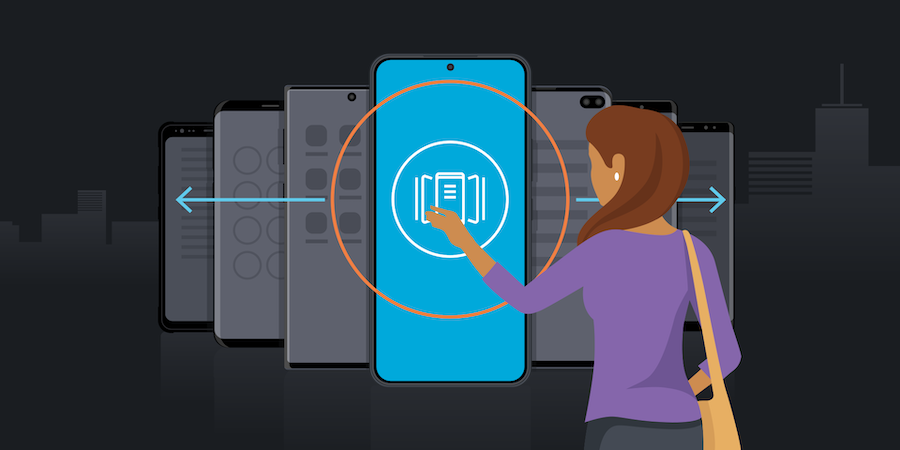Investing in technology pays off for companies of all sizes. However, the adoption process is often trial and error, and many small businesses don’t have the luxury of making mistakes when it comes to these investments, particularly in today’s uncertain business environment.
That may explain why some small businesses have been slow in adopting mobile solutions that have transformed larger workplaces. Phones have increased productivity in ways unparalleled since the introduction of the PC. A study revealed that adopting a Bring Your Own Device (BYOD) program can further enhance employee morale and increase engagement — without the mobile devices, businesses are more prone to a negative impact on improving productivity in the workplace.
As small businesses look to make productivity gains, they should consider the following three investment areas that balance security, cost and efficiency.
1. Get your head in the cloud
Cloud computing has been around for many years, but the cost of operating a business from the cloud has dropped significantly. Moving your data and business processes to the cloud allows for greater collaboration and enables employees to perform tasks without being tied to their desks.
Cloud-based platforms bring many benefits for small businesses: tremendous scalability, high reliability, increased security and greatly reduced management costs, to name a few. Small businesses should take a hard look at existing IT and ask themselves, “Is this strategic?” If the answer is no, it’s time to outsource.
The most basic example of this is email. Many small businesses still run their own Exchange servers, but that’s no longer necessary or optimal for most. Pushing email to the cloud, regardless of the provider you choose, lets you quickly scale an ultra-reliable service and removes limits associated with running your own data center.
More importantly, you can redirect your limited resources to support strategic goals. Rather than paying an IT manager to keep your Exchange server running, you can have that same professional — who has deep knowledge of how your business works and what IT services you need — focus on finding the technology services and products that give you a strategic advantage over the competition.
2. Go mobile
Mobility has been a buzzword since the 1990s, but the focus used to be on laptops and making the best of internet connections. Now, with enterprise-class smartphones as fast as many laptops and 5G data services covering huge swaths of the globe, the last few years of technology advances have made mobile-only workflows feasible. Even in the absence of true work mobility, providing support for staff to use their mobile devices for work through a Bring Your Own Device (BYOD) or Choose Your Own Device (CYOD) program is a smart investment.
But you can go a lot further by making the devices key to day-to-day workflow. Phones and tablets are ideal for consuming information and for basic data entry tasks, and they do so at a fractional cost of managing Windows desktops or laptops. Take the latest family of Galaxy Fan Edition (FE) devices packed with capabilities, for example. Employees can be equipped with the Galaxy S23 FE mobile device, Galaxy Tab S9 FE and Galaxy Buds FE, which all seamlessly connect to make work easier wherever you are.
Meanwhile, foldable devices like the Samsung Galaxy Z Fold5 are taking mobile productivity to the next level with integrated, PC-like features designed for business use. In many cases, foldables can even save your business money by allowing for device consolidation, while enabling enhanced productivity on the go.
High-performance hardware only reaches its full potential when it’s used in conjunction with the right software. For businesses, that increasingly comes in the form of cloud-based apps. Enabling employees with the right apps can help boost productivity by creating an intuitive workflow that makes it easier for employees to do their jobs.
Small businesses should evaluate their applications and processes, looking for ways to help employees be more efficient when they’re on the move.
3. Adopt AI, analytics and machine learning
These buzzwords may sound unobtainable for a small business investment. Developing custom AI applications may be beyond the reach of the small business, but there’s an important exception: New technologies that let you do more with your own data are being built into off-the-shelf software offerings.
What's the best phone for your business?
Take this quick assessment to discover the smartphone most tailored to your business needs. Download Now
Investing in the future
Investing in mobile technology gives you the tools needed to harness future opportunities. As a small business, the right software and software-as-a-service (SaaS) partners can provide greater flexibility to your business needs. Automation can help you monitor business performance, deliver a winning customer experience and increase employee productivity. But what’s the best way to access that when you’re exploring technology growth as a small business?
Navigating the technology landscape is easier with the right partners. Programs such as Samsung for Business give small businesses access to solutions, pricing and services that have historically been reserved for enterprise organizations and can help overcome the obstacles that may hinder technology investments.
If your budget is holding you back from revitalizing your mobile program, partner programs can offer access to discount pricing, trade-in credits, tax-exempt transactions for qualified organizations and dedicated business financing that help you move forward with innovation.
Small business-focused partner programs can also help you access solutions and technologies typically reserved for larger organizations. For example, Care+ for Business gives access to hassle-free repairs and coverage for accidental damage, which can reduce concerns about investing in new technologies. Mobile device management solutions like Samsung Knox make it easy to roll out devices, manage updates and handle security from a cloud-based interface. Working with partners like Samsung helps you tap into an ecosystem of options such as connecting mobile devices to screens for true on-the-go productivity while reducing the hardware purchases needed.
Many small businesses have a difficult time committing to technology evolution. But as more advanced tools develop, perform an environmental scan of your important applications to see what you may be missing — or if there’s a feature you haven’t explored yet that could help.
Small businesses may not have the resources to make big IT investments, but they should still leverage the tools and products available to companies of all sizes. Of all the tech trends in the marketplace, cloud, mobility and AI-powered software are the best fit for small businesses to improve their bottom line and increase their competitiveness. Strategic partnerships can help close that gap and give your team what they need to power up your business.
Explore exclusive business pricing, financing, trade-in options and other deals on everything from phones and tablets to monitors and memory. Not sure where to start with business smartphones for yourself and your employees? This free guide can help.









